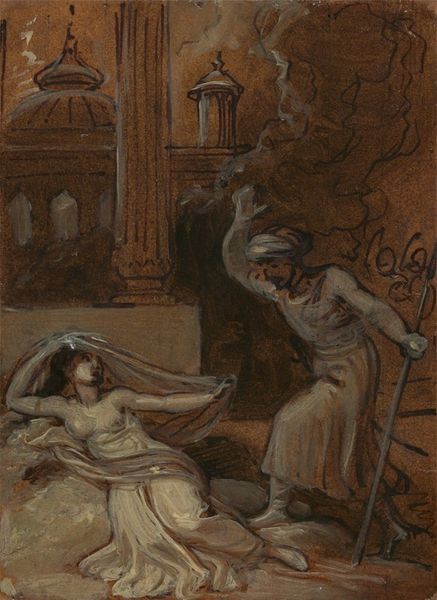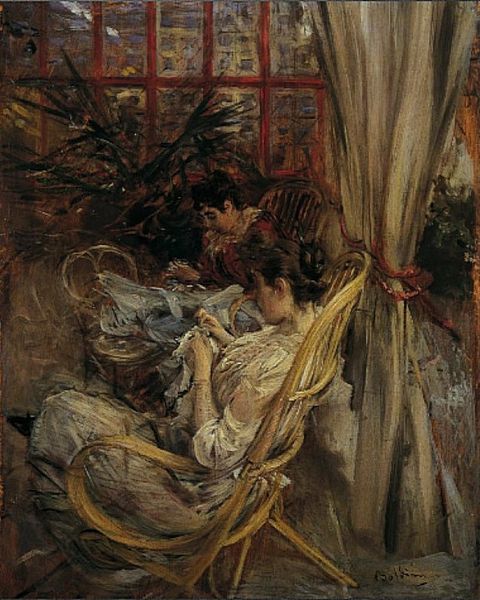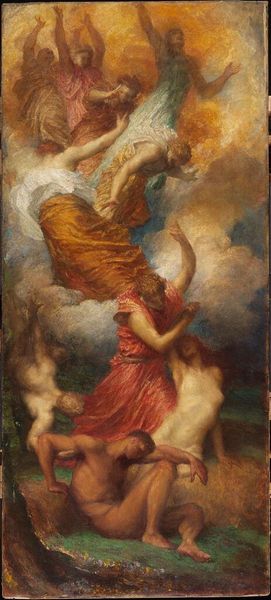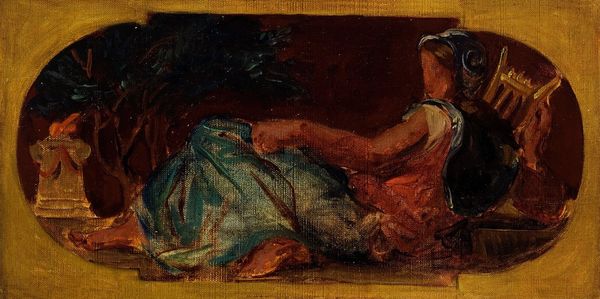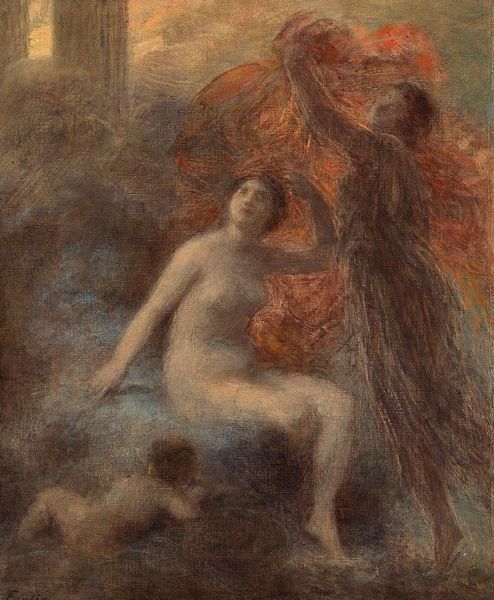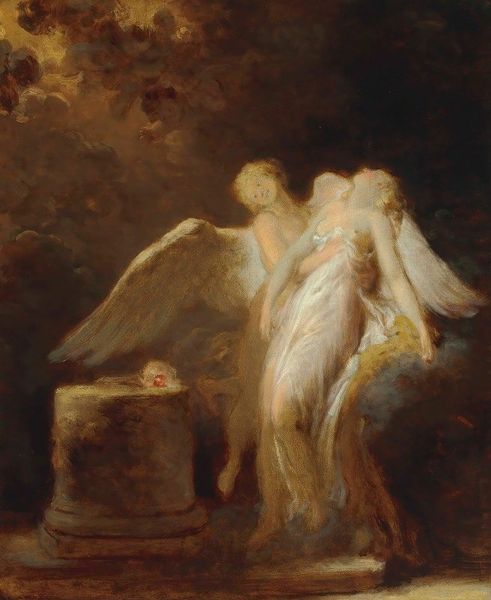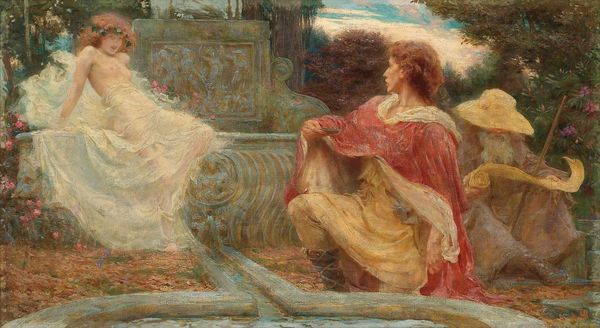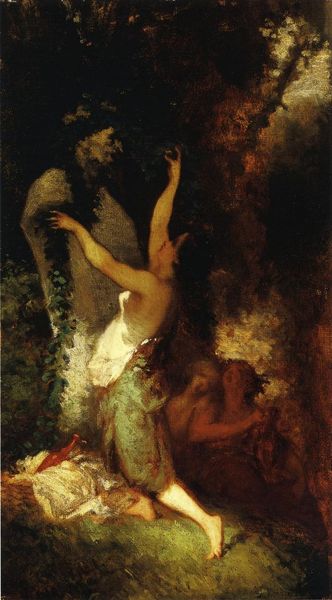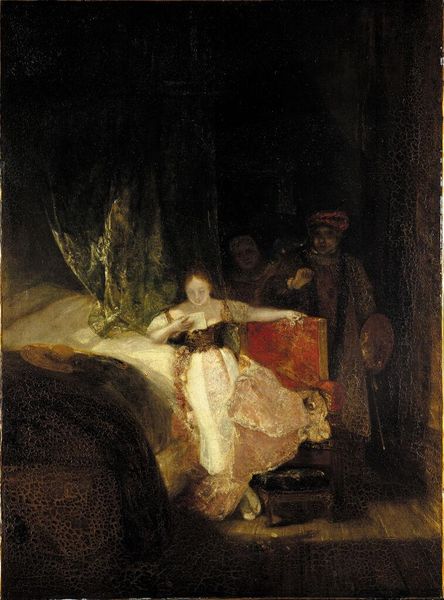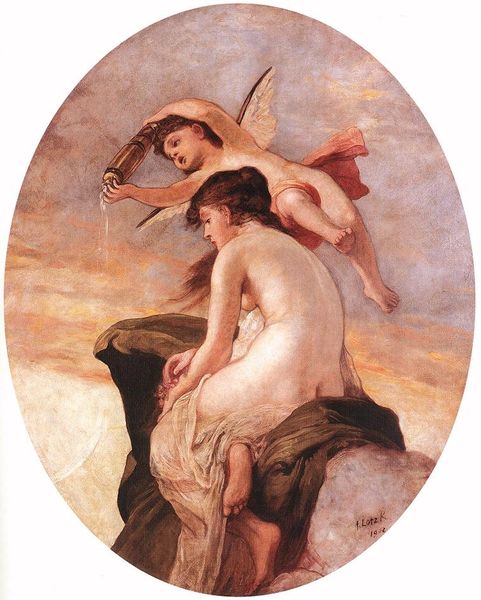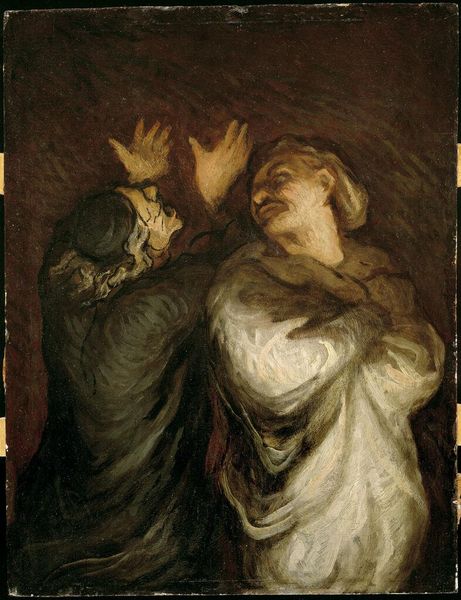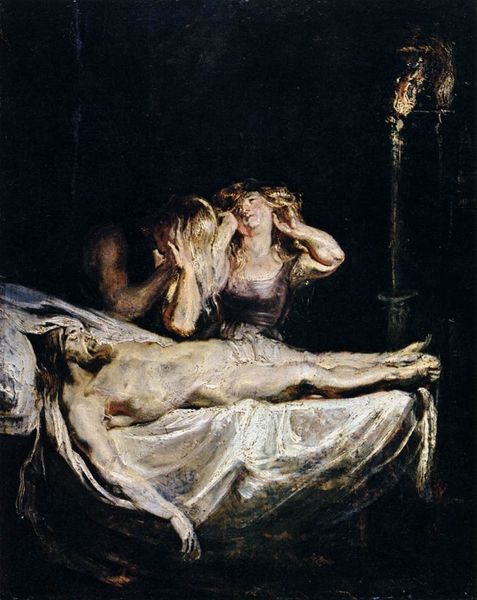
painting, oil-paint
#
portrait
#
allegories
#
allegory
#
symbol
#
painting
#
oil-paint
#
oil painting
#
symbolism
#
genre-painting
#
expressionist
Copyright: Public domain
Curator: Before us hangs Gustav Klimt's "Female Organ Player," painted in 1885, quite early in his career. It resides here at the Belvedere in Vienna. Editor: My initial thought is the piece has this wonderful unfinished quality; there's a tension between the carefully rendered details and areas that almost melt into the background. You can see the strokes and layering, particularly in the ghostly figure behind her. Curator: The figure adds a layer of symbolism, perhaps representing musical inspiration or a spiritual presence evoked through music. Klimt, especially later in his career, often explored these allegorical themes related to the human condition. The placement in Vienna surely affected his process as well, no? Editor: Undoubtedly. It's hard to divorce Klimt's processes from the cultural ferment of late 19th-century Vienna. But even here, one sees him concerned with technique. Consider the materiality of the green gown, it clearly takes more effort and care with its color layering versus the wash of fabric that creates the translucent floating figure. This difference is clear considering he relied so heavily on private patronage from bourgeois Viennese society. Curator: Precisely! It shows how those specific contexts informed Klimt's decision-making. This work fits into an artistic landscape increasingly shaped by institutions like the Secession, influencing the patronage and critical reception Klimt needed for recognition. Editor: Right, how the making of this painting ties in with Viennese society underscores his eventual embrace of more avant-garde methods like using gold leaf. You can't overlook the patronage's need to still express wealth via detailed craftsmanship like he renders the gown. It’s all part of the system in that the elites who bought this work also contributed to constructing Klimt's future rebellion! Curator: A fascinating dynamic, for sure. It reminds us how artwork can offer multiple layers of interpretation. Editor: True, understanding art means investigating materials and manufacture, to unveil their full story in that epoch of cultural shift.
Comments
No comments
Be the first to comment and join the conversation on the ultimate creative platform.
